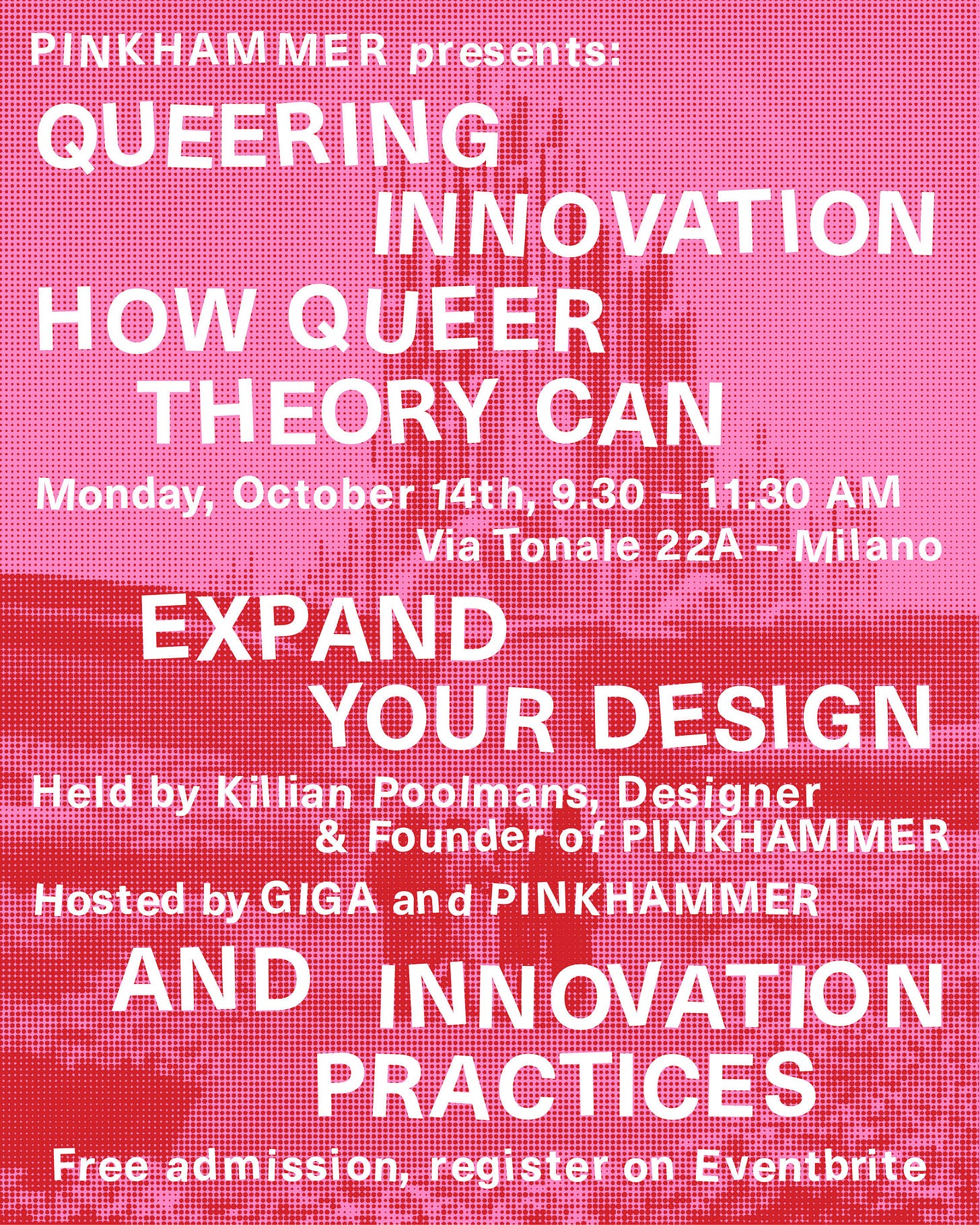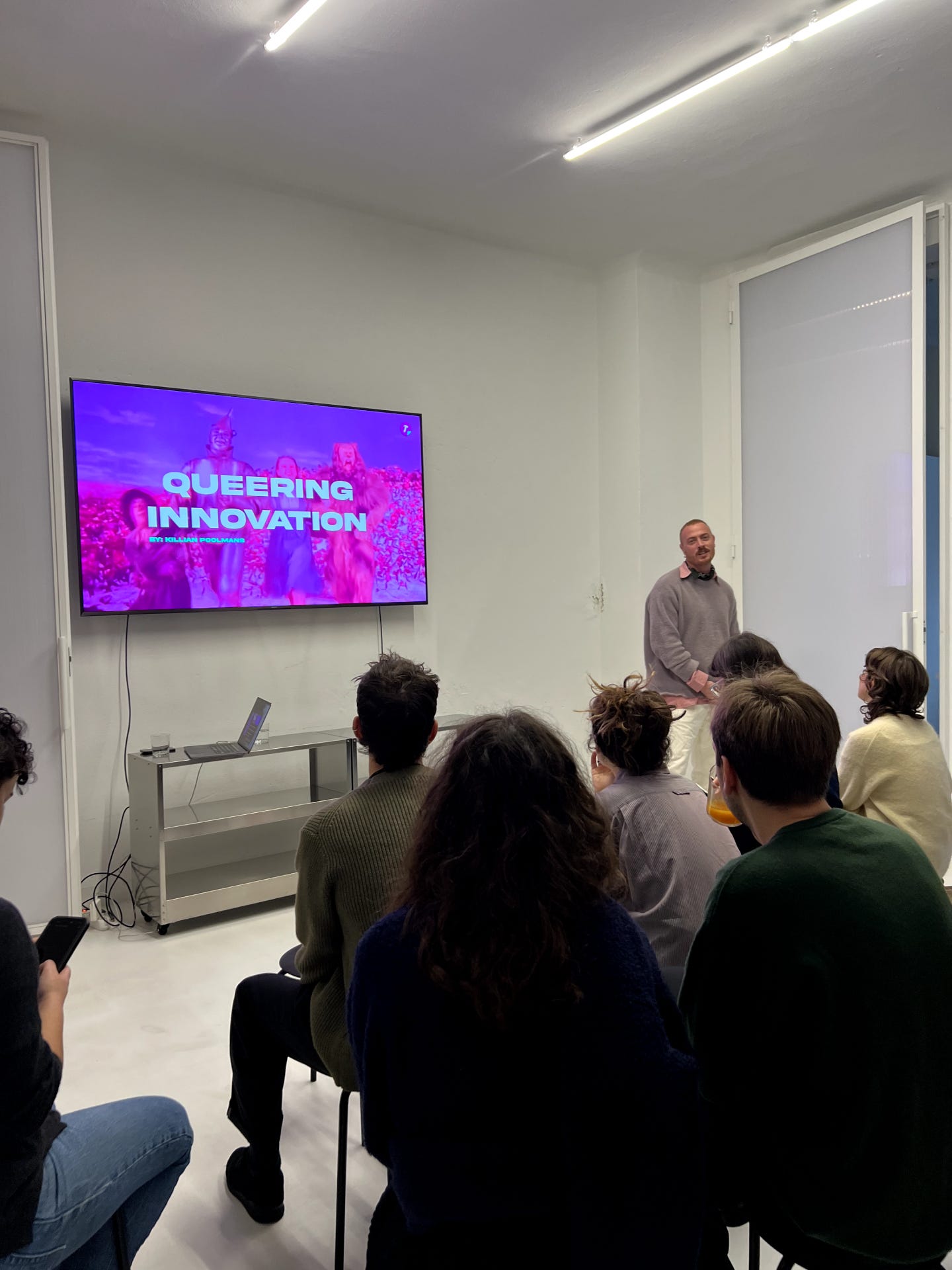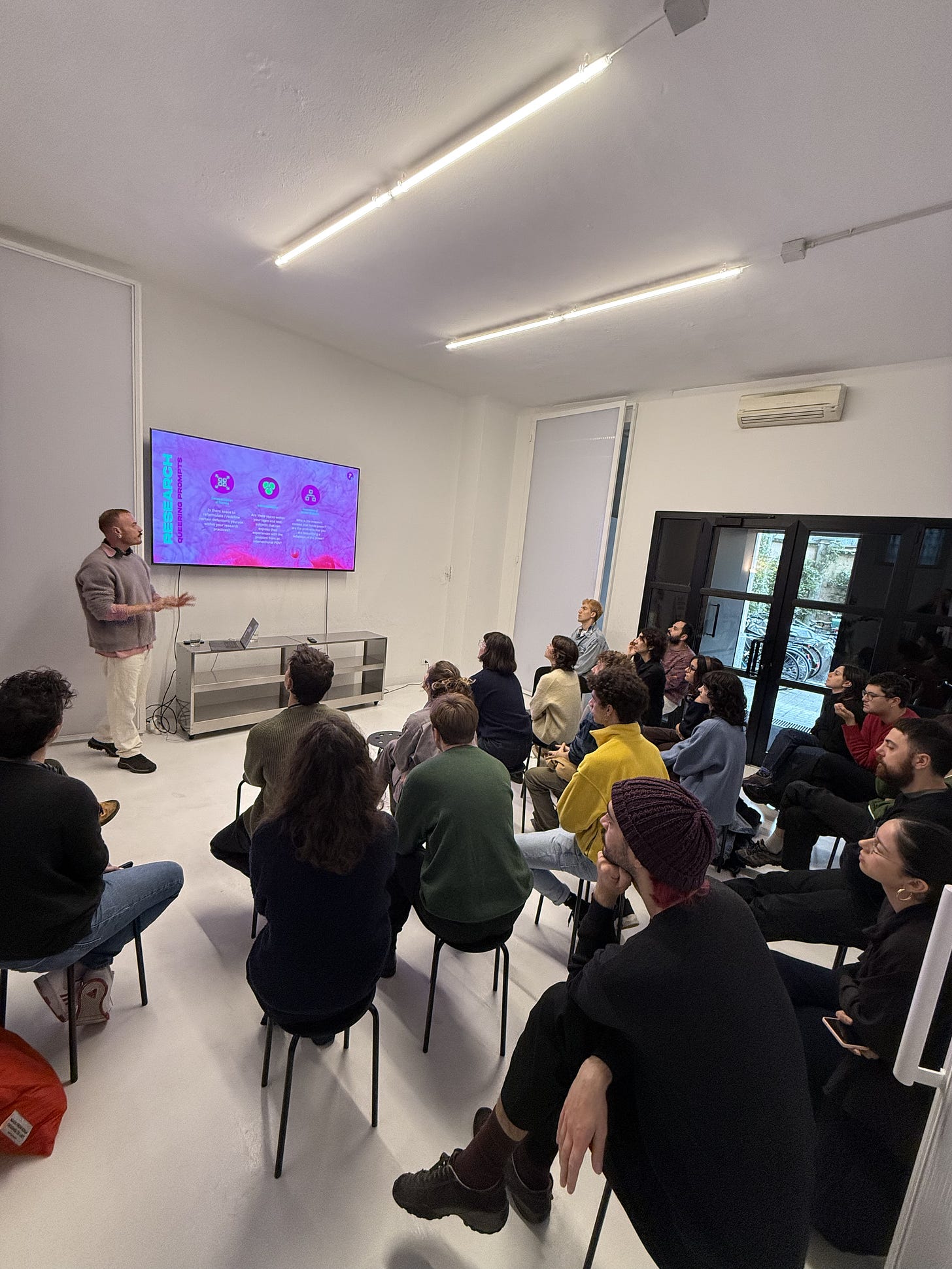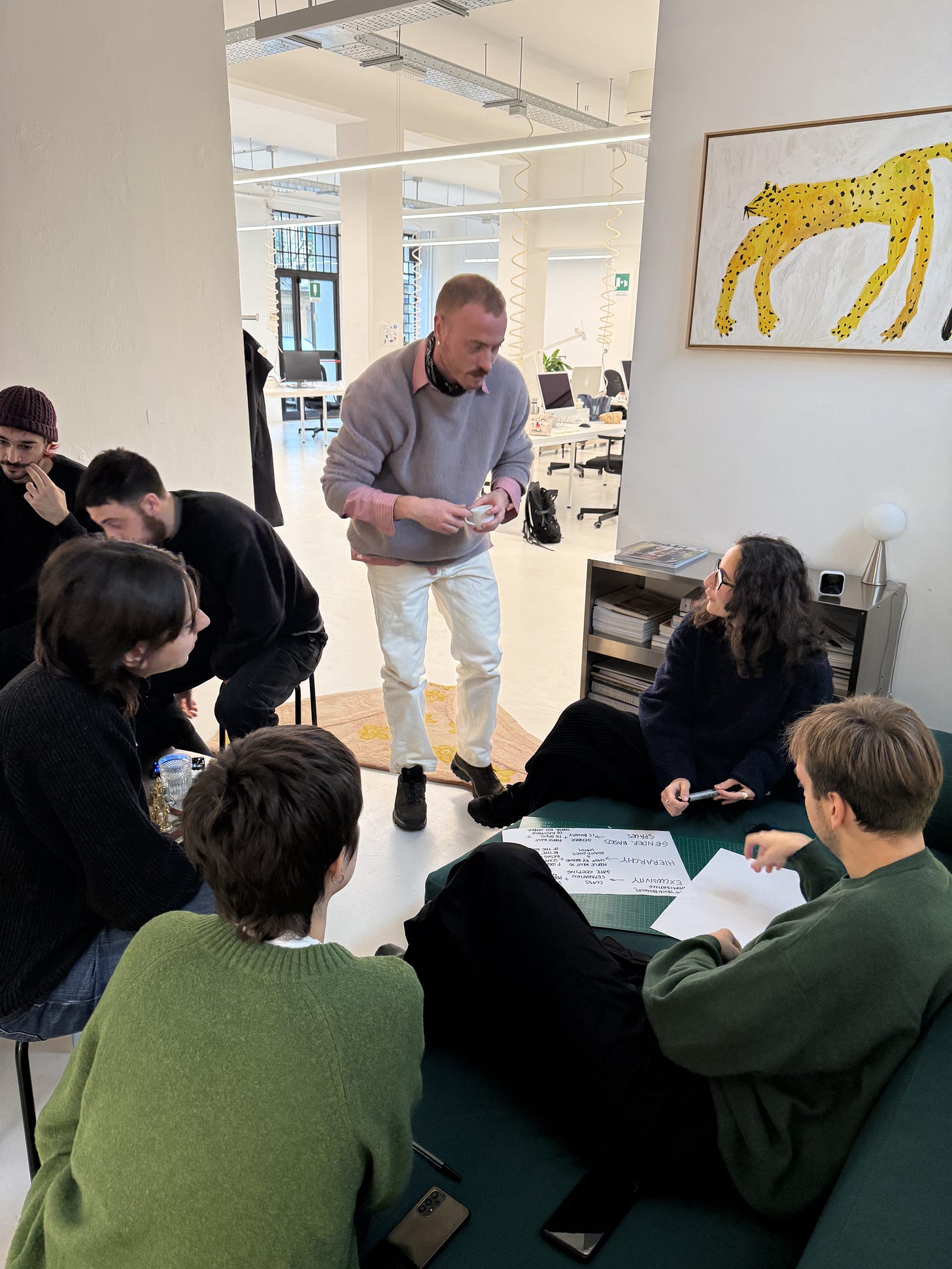#07 – On queer theory applied to design practices
An interview with Killian Poolmans from Pinkhammer
Last October at Giga, we had the opportunity to host Killian Poolmans from Pinkhammer, a training program for designers and creative teams. He delivered a lecture on how queer theory can expand design and innovation practices and afterwards held a quick workshop to put us and the other guests hands on on a project.
During the workshop, we were introduced to a refreshing approach and a highly accessible design framework for thinking outside the box. Something that really resonated with us since we are always looking for new and interesting ways to brainstorm and share ideas within the team and with our clients.
Here’s an exchange we had with Killian to delve deeper into his practice and share more on the journey he took to start Pinkhammer.
How did you start Pinkhammer?
With a background in Industrial Design Engineering, I began my career at design consultancies in Berlin and later Melbourne. I worked with teams in both multinationals and startups, helping them set up their design and innovation practices. Over the years, I realised that design within organisations often doesn’t reach its full potential. I've always seen design as a way to envision a better society, one that benefits more people. To take this idea further, I started Pinkhammer; a collective of designers, artists, psychologists, and activists dedicated to a broader vision of design and innovation. We now offer digital training programs to help teams amplify their impact and create solutions that serve the full spectrum in society.
How is your project related to or influenced by your previous experiences in the creative field?
Working in big corporations taught me what drives large design teams and the balancing act behind their decisions. Then, working with accelerator programs showed me how to build design capabilities from scratch. Combining these experiences, I saw what works and what seriously needs to change in both spaces. That’s where Pinkhammer comes in: we use insider knowledge to reshape how design and innovation are done.
In a world where experiences are often driven by commerce and therefore required to be frictionless, how much do you think your framework can create new perspectives and opportunities?
I see the idea that our world’s experiences are purely commerce-driven as a narrow view of both the world and design itself. Thankfully, experiences surround us from the moment we wake up to the moment we go to bed. Looking out the window in the morning, watching a sunset with friends. These moments are meaningful without any commercial influence, and that’s key. As designers, we should look beyond the idea that commerce shapes everything we create. We have skills that go far beyond contributing to the commercialization of experiences. My work is about embracing the responsibility designers hold for what we put into the world, creating things that go deeper and serve a wider purpose than just profit. It's about really understanding that the experiences we create can shape the society we grow into.
Are there any materials you would recommend for diving into queer theory and also its application to design and innovation practices?
I think media outside of traditional design can really benefit the design process. Designers sometimes get too caught up in staying loyal to design theories, but what actually enriches our work are ideas beyond that bubble. Personally, I’ve found a lot of inspiration in Queer Theory. One book that brings together innovation theory (even if unintentionally) and Queer Theory is *Cruising Utopia: The Then and There of Queer Futurity* by José Esteban Muñoz. It’s a fantastic read for anyone interested in building fresh visions of the future, and I highly recommend it.
Did you notice any difference in outcomes in different cities? How do you choose the topic of your workshop when you move from city to city?
Milano has definitely been one of the coolest spots for this workshop. In Rotterdam, designers are often very business-oriented—every decision needs to make financial sense. In Berlin, it's all about the technical aspects and how to make the methods work. But Milano is deeply focused on the creative side, with a more traditional view of what design represents. So, seeing so many people resonate with the idea that design can push boundaries and create impactful future visions was inspiring. I was also surprised by how much "Queering Innovation" resonated; although it’s a fresh concept for many designers, they loved seeing it presented in such a hands-on way.
The topic stays consistent across cities, but the workshop element changes each time. I keep iterating and adapting it based on the location—and, of course, the part of the city we "queer" is always a traditional icon: La Rinascente in Milano, Karstadt in Berlin, and Bijenkorf in Rotterdam.
If you're interested in this topic,
feel free to visit pinkhammer.space or contact Killian directly by email.







